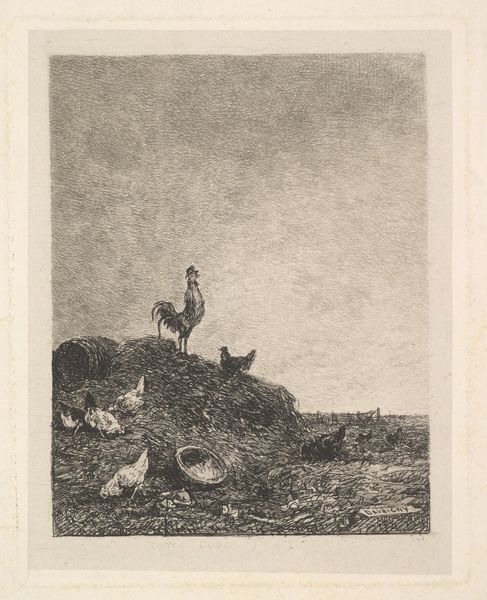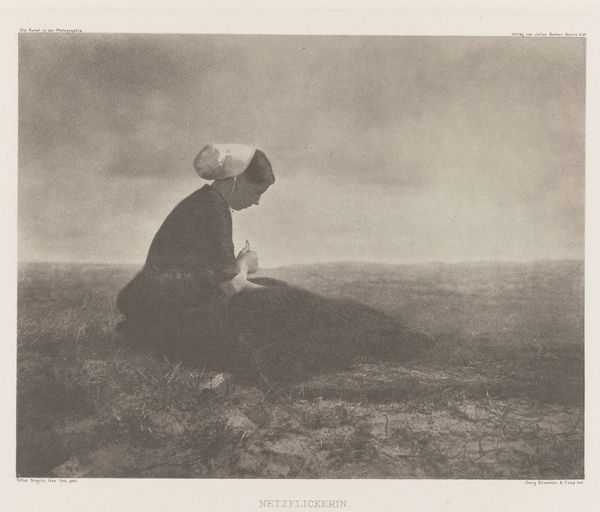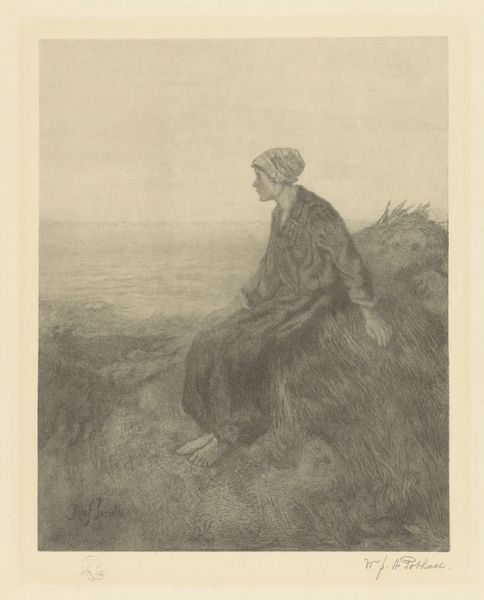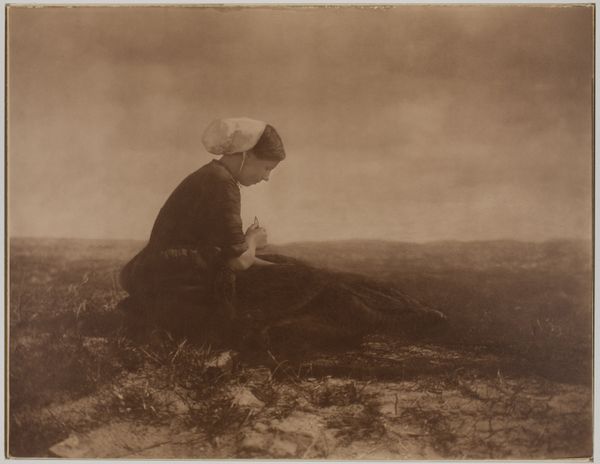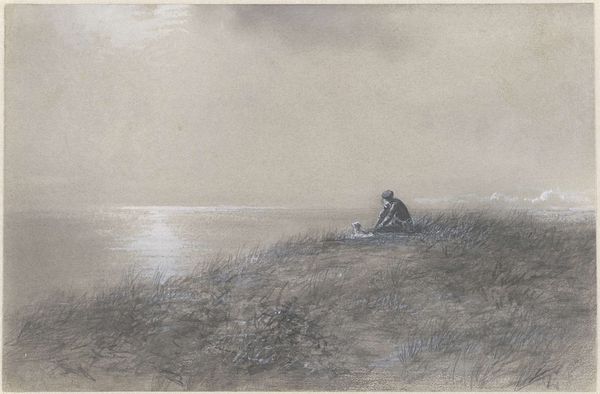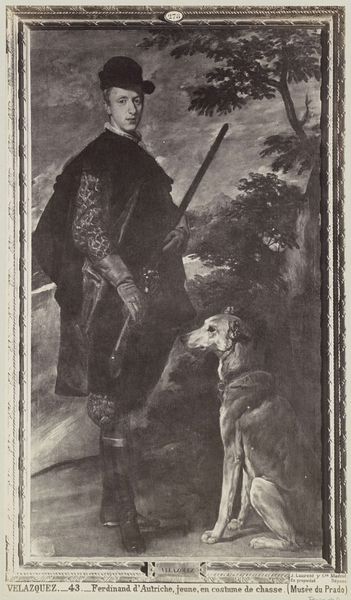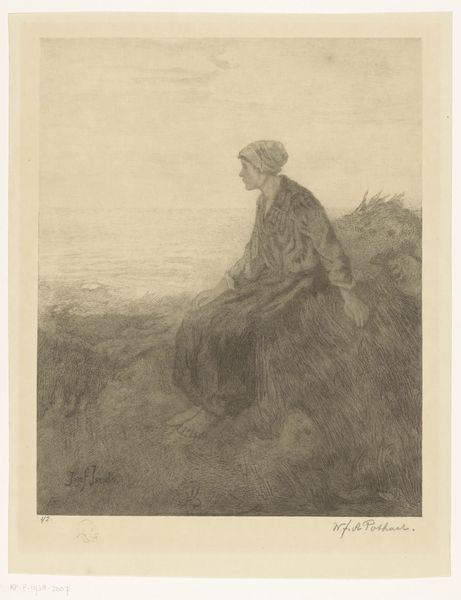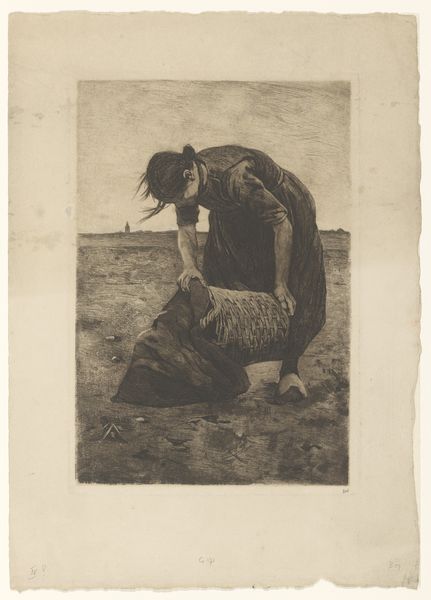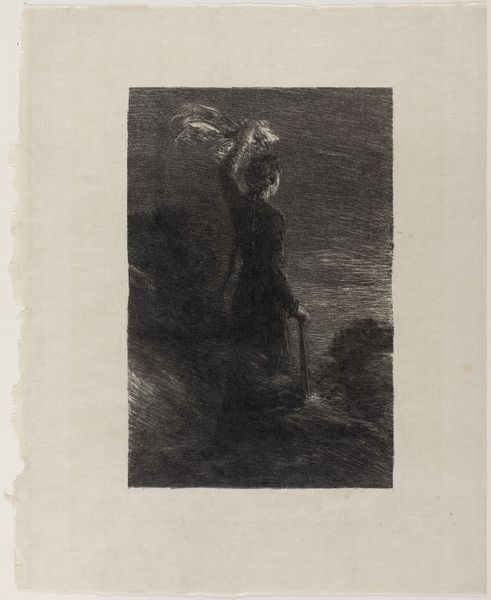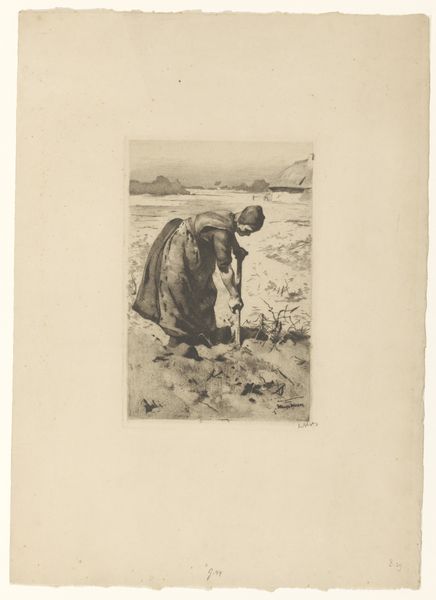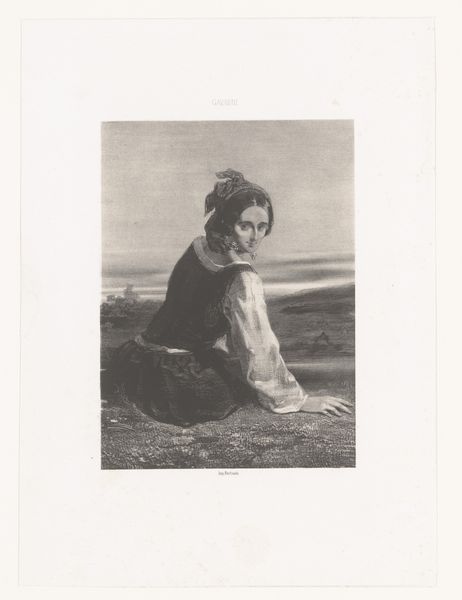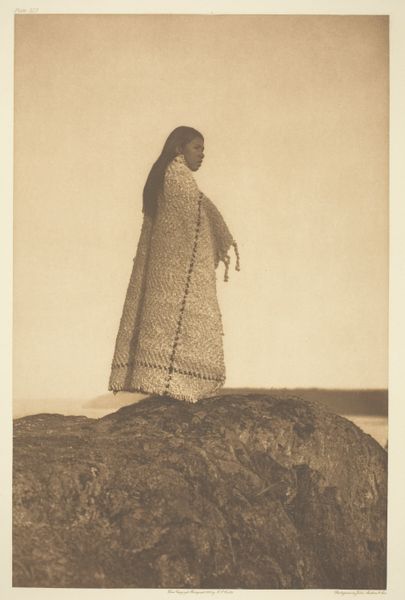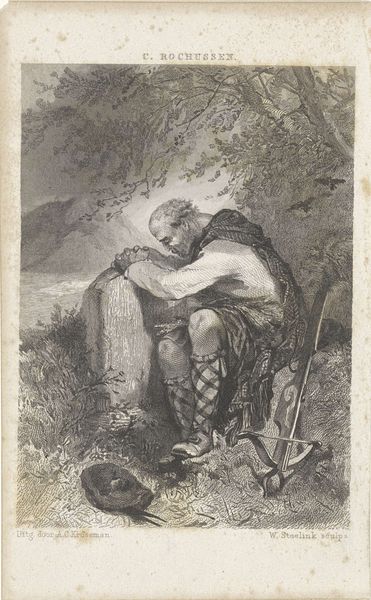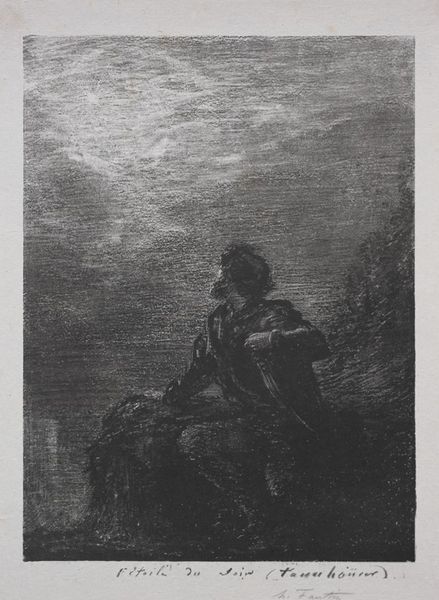
Dimensions: height 155 mm, width 95 mm
Copyright: Rijks Museum: Open Domain
Curator: What a striking image! We’re looking at “Man met viool,” or "Man with Violin," an engraving created between 1855 and 1865 by Dirk Jurriaan Sluyter. It’s currently part of the Rijksmuseum collection. Editor: Melancholy. That’s the immediate feeling I get. The monochromatic palette, the lone figure, and the stark horizon—it all coalesces into a profound sense of isolation. Curator: The image clearly reflects Romantic sensibilities. The engraver, Sluyter, transforms the traditional artistic processes of printmaking through a particularly expressive employment of line. The material impact here stems directly from access to the medium and its distribution, no? It’s more democratic than an oil painting, more easily disseminated among the masses. Editor: Yes, but notice how the composition, enclosed within this oval frame, enhances the subject’s introspection. The contrasting light, particularly around the horizon line, draws the eye upward, inviting contemplation of something beyond the man himself. There is a clear sense of semiotic loading here where the individual is poised between darkness and light. Curator: I see your point. Yet, it’s important to consider the context. Engravings like these were often produced for mass consumption, distributed in books or periodicals. So, while the formal elements guide the viewer, we shouldn't ignore how this piece functions within the broader visual culture and the social and economic systems of its time. The value is embedded not only in the final artwork, but its means of reaching its audience. Editor: Absolutely. However, doesn't the very choice of engraving as a medium also enhance the narrative? The sharp lines, achieved through rigorous physical labor on the plate, emphasize the stark realism while subtly romanticizing this rather forlorn violinist? The tension itself provides an enriching interpretive matrix! Curator: True, there’s a fascinating interplay there. It makes me wonder about the engraver’s intended audience and how they may have perceived the value of art, labor, and personal expression during this period. I imagine owning and cherishing such an engraving was significant to many households, marking their engagement with wider society. Editor: Ultimately, “Man met viool” demonstrates how deeply aesthetic considerations can intertwine with both historical context and artistic intention to create an experience that goes beyond representation. The composition offers a meditation on the complexities of the human condition, resonating in its visual construction.
Comments
No comments
Be the first to comment and join the conversation on the ultimate creative platform.
